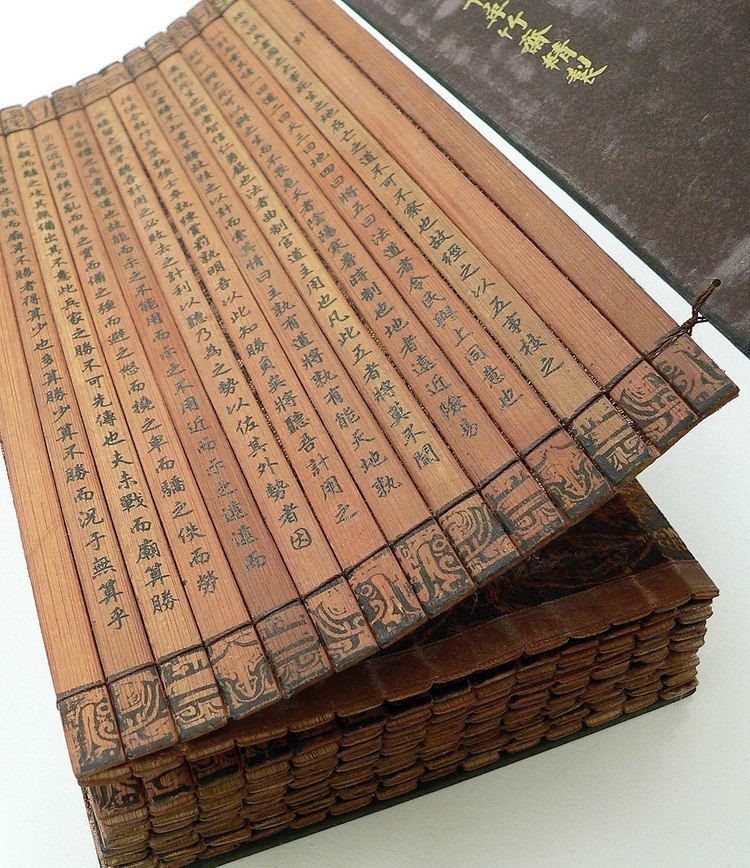Traditional Chinese 簡牘 Hanyu Pinyin IPA [tɕjɛ̀ntǔ] | Simplified Chinese 简牍 Wade–Giles chien-tu | |
 | ||
Literal meaning "Bamboo strips and wooden slips" | ||
Bamboo and wooden slips (Chinese: 简牍; pinyin: jiǎndú) were the main media for documents in China before the widespread introduction of paper during the first two centuries AD. (Silk was occasionally used, but was prohibitively expensive.) The long, narrow strips of wood or bamboo typically carry a single column of brush-written text each, with space for several tens of visually complex ancient Chinese characters. For longer texts, many slips may be bound together in sequence with thread. Each strip of wood or bamboo is said to be as long as a chopstick and as wide as two. The earliest surviving examples of wood or bamboo slips date from the 5th century BC during the Warring States period. However, references in earlier texts surviving on other media make it clear that some precursor of these Warring States period bamboo slips was in use as early as the late Shang period (from about 1250 BC). Bamboo or wooden strips were the standard writing material during the Han dynasty and excavated examples have been found in abundance. Subsequently, paper began to displace bamboo and wooden strips from mainstream uses, and by the 4th century AD bamboo had been largely abandoned as a medium for writing in China.
Contents
The custom of interring books made of the durable bamboo strips in royal tombs has preserved many works in their original form through the centuries. An important early find was the Jizhong discovery in 279 AD of a tomb of a king of Wei, though the original recovered strips have since disappeared. Several caches of great importance have been found in recent years.
Major collections
The Shanghai Museum corpus was purchased in Hong Kong the year after the Guodian tomb was excavated, and is believed to have been taken by tomb robbers from a tomb in the same area. The Tsinghua collection was donated by an alumnus who purchased it through auction, with no indication of its origin. The others are archaeologically excavated.
Accoutrements
One accoutrement used when writing on bamboo slips was a small knife which would be used to scrape away mistakes and make amendments. Decorated knives became a symbol of office for some officials indicating their power to amend and change records and edicts.
